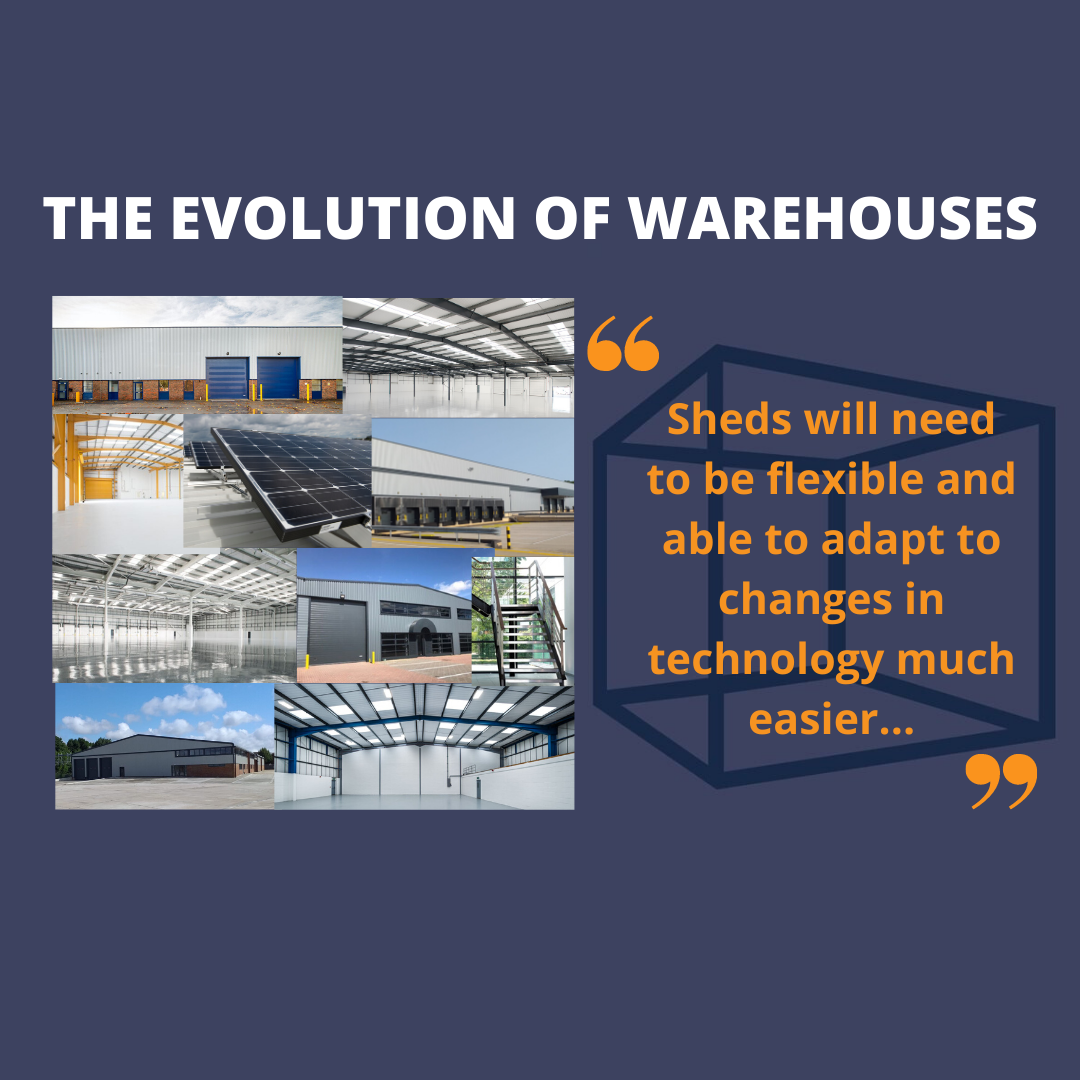Warehouses carry a rich history dating back almost 2,200 years to ancient Rome. ‘Horrea’, as they were known back then, was developed when the trade of wine, olive oil and grain reached a critical mass and required storage throughout the exchange process.
Since then, warehouses – or big sheds as we like to call them – have been built and refined through many iterations, from local storehouses during the middle ages to multi-million-pound facilities that play a critical role in global trade and commerce.
From Warehouse to Distribution Centre
Thanks to globalisation and the rapid growth of e-commerce, brands and retailers such as Amazon, Ocado, Lidl and Primark need more warehousing space to be able to hold a wide variety of inventory and to pack all deliveries for individual customers.
COVID-19 has only increased this need. According to leading logistics companies, latest estimates indicate that the pandemic has accelerated the online retail revolution by around three to five years and has placed a heightened focus on retail and ‘last mile’ warehouses.
It’s no wonder then, that there has been a huge demand in mega-distribution centres all over the UK and Europe. Unlike warehouses, distribution centres are integrated into logistical networks of transport and third-party distributors that also require sophisticated technology.
Not only are warehouse management systems (WMS) and transport management systems (TMS) pivotal to the success of warehousing performance but newer technologies such as robotics and drones are also being integrated to make the process within a warehouse more accurate and efficient.
Shapeshifting Sheds
So how does the implementation of newer technologies change the way a warehouse is designed and built?
According to Mark Huttlestone, Associate Director at Pexhurst, “We are seeing more structural and infrastructural changes in design to meet the requirements of distribution centres as well as accommodating the movement for more environmentally friendly sites which serve and protect the local communities.”
Mark has experienced first-hand the extensive remodelling involved in the conversion of a space into a single large distribution centre with a floor space of 37,000 sq. ft. The remodelling of Bush Industrial Estate saw the introduction of extensive support steel columns and wind bracing to create an open plan warehouse required to house a new robotics system scheduled to be installed by the new tenant – leading online grocery retailer Ocado.
The site also offers extensive external hard standings to accommodate the tenant’s new electric fleet. Extensive duct networks were installed ahead of casting new concrete slabs to provide suitable data and power management networks. All helping to provide effective and expedient vehicle loading information and local charging points for the new electric vehicles.
Looking to the Future
COVID-19 has had a profound impact on the way we consider logistics and as we move into the future, it is vital to use what has been learned from recent events to future-proof businesses, buildings and supply chains.
A ‘just-in-time’ model is fine if you have a reliable and secure supply chain, but following widespread disruptions as a result of the lockdown many businesses are now considering building in some contingency storage. But what other factors need to be considered?
According to Stuart Byles, Director at Pexhurst: “Sheds will need to be flexible and able to adapt to changes in technology much easier, as the typical lease period of ten or more years represents an enormous amount of time in terms of potential technological advancements.”
“There will be a growing demand for locally-based flexible units of varying sizes that squeeze the property usage bands. We have already seen warehouses being reconfigured to suit live/work schemes and I can see this becoming normalised. We will also continue to see a demand for last mile logistics requirements as we become more reliant on e-commerce and quicker on-demand services such as Amazon Prime Now.
“…in the same way supermarkets delved into small local outlets a decade ago, we may see a national trend towards smaller logistics hubs across the country, reducing carbon footprints for larger suppliers.”
Overall, warehouses have come a long way from their initial purpose as local storehouses… They are now multi-million pound facilities that play a fundamental role in global trade and are rapidly becoming heavily relied upon for last-mile logistics thanks to the rise in e-commerce.
Follow us on LinkedIn – https://www.linkedin.com/company/pexhurst-services-limited/










